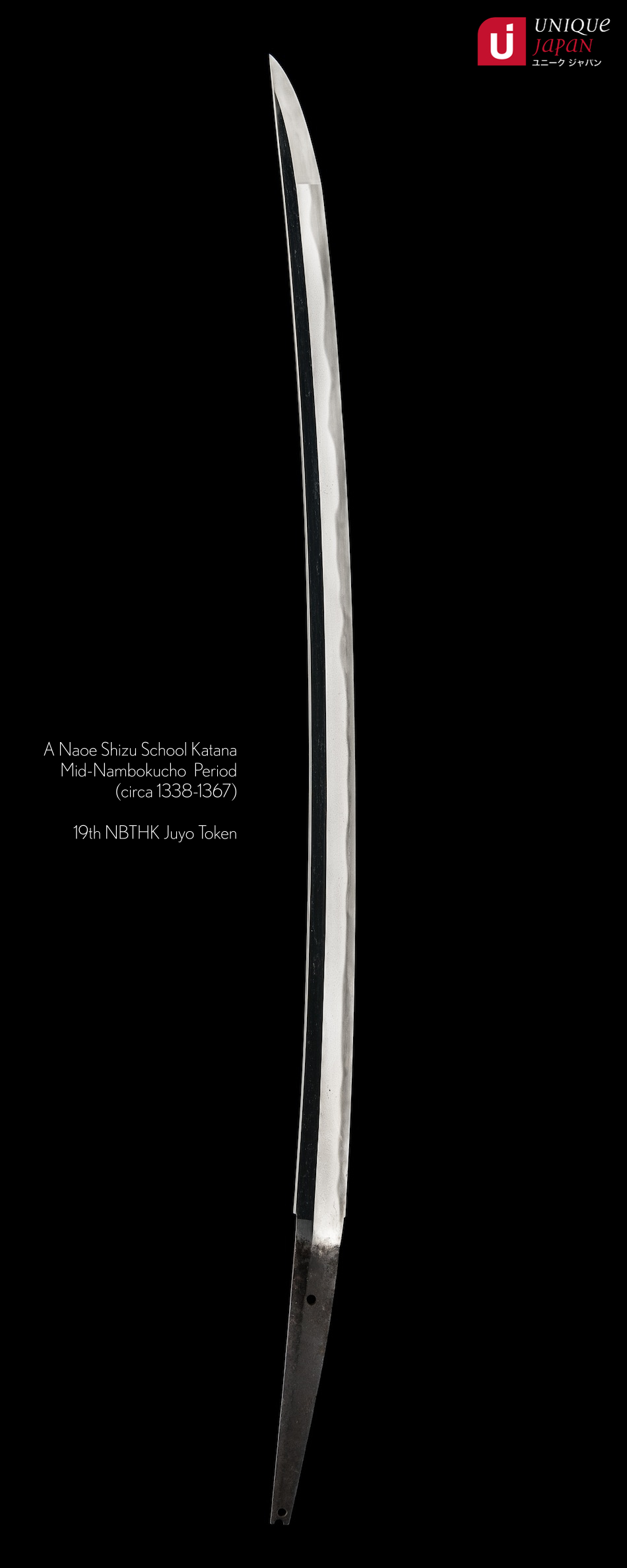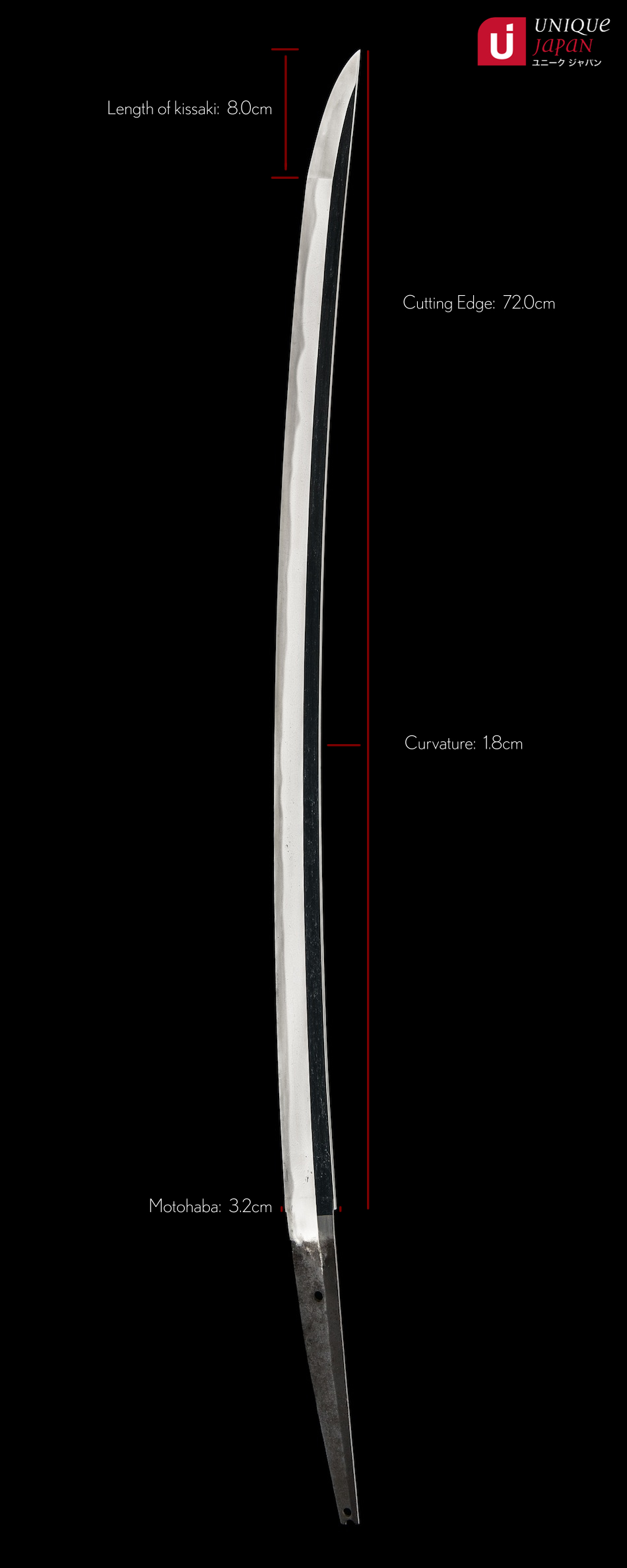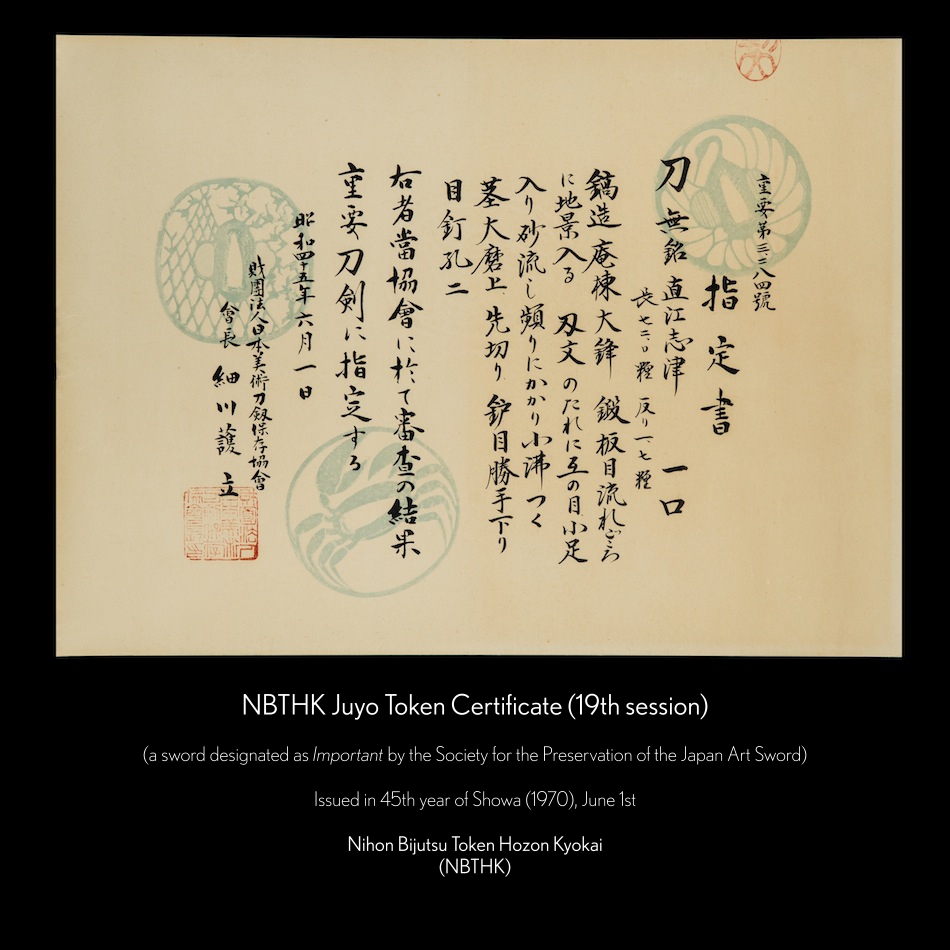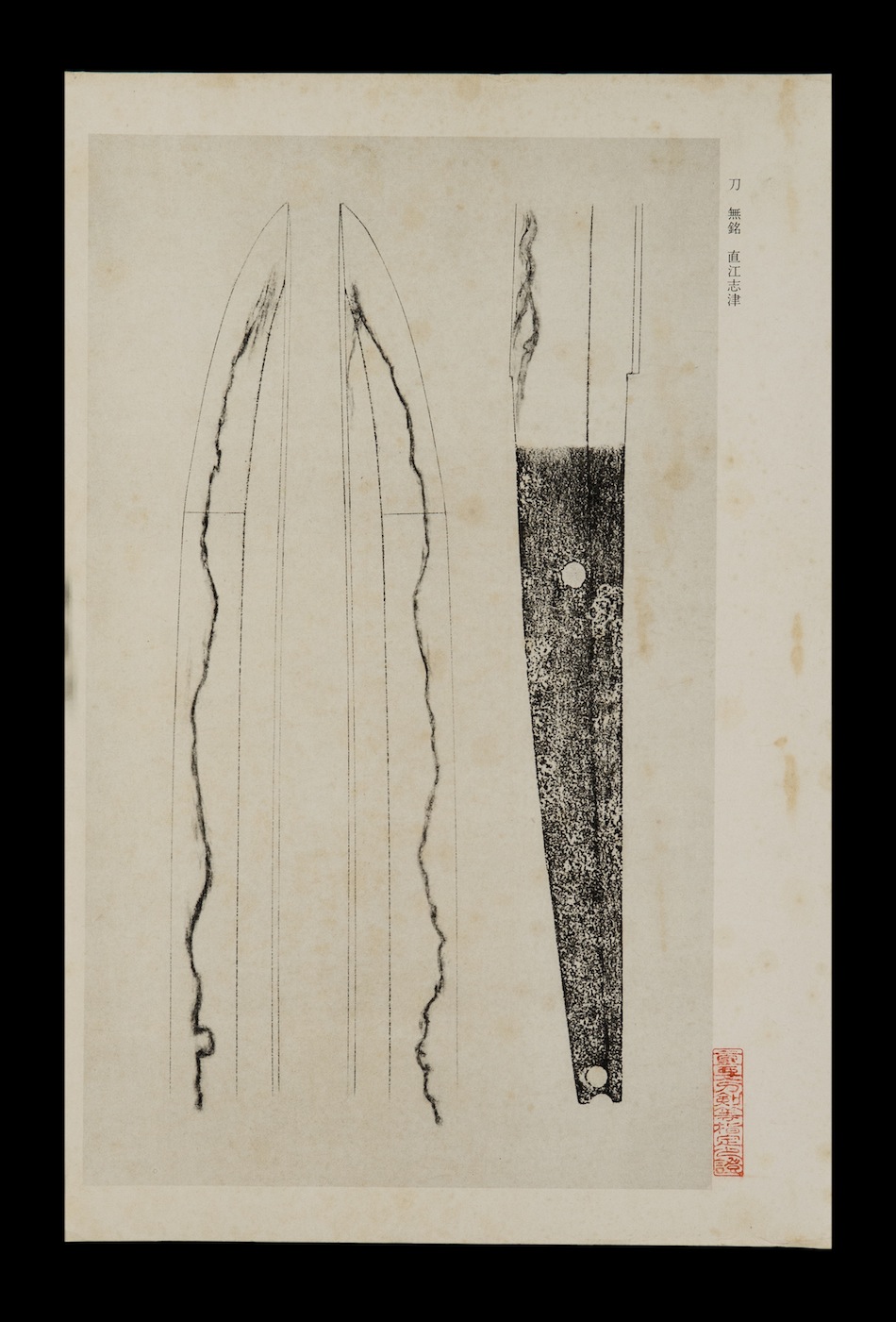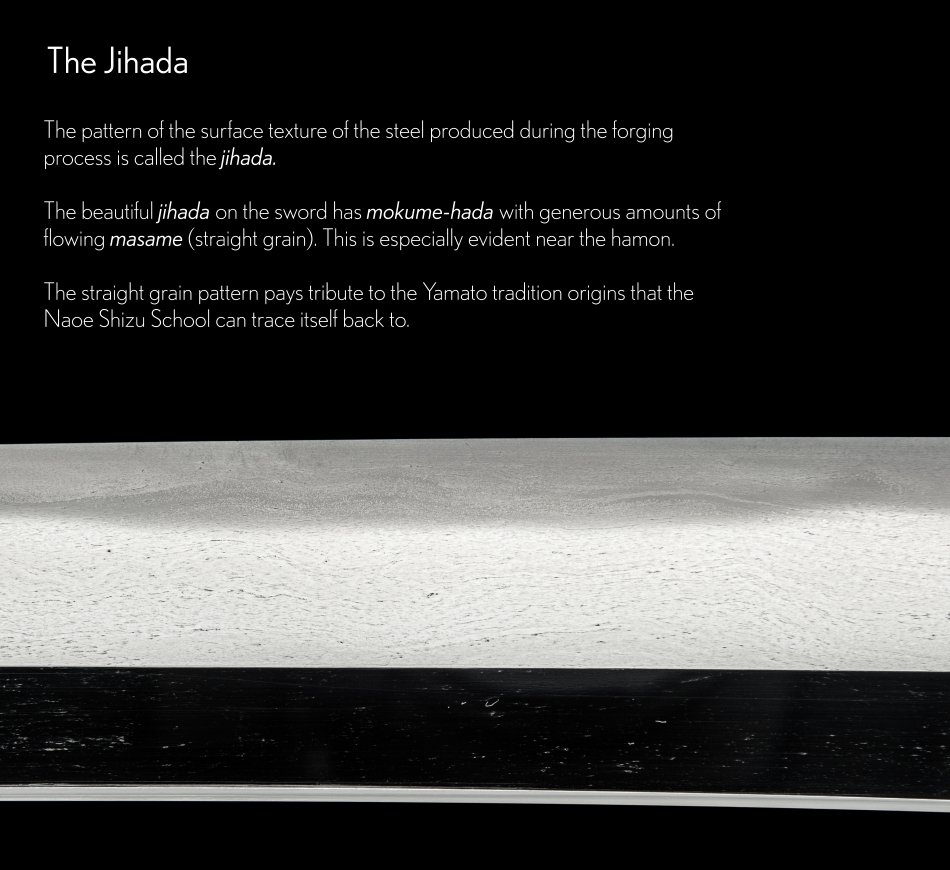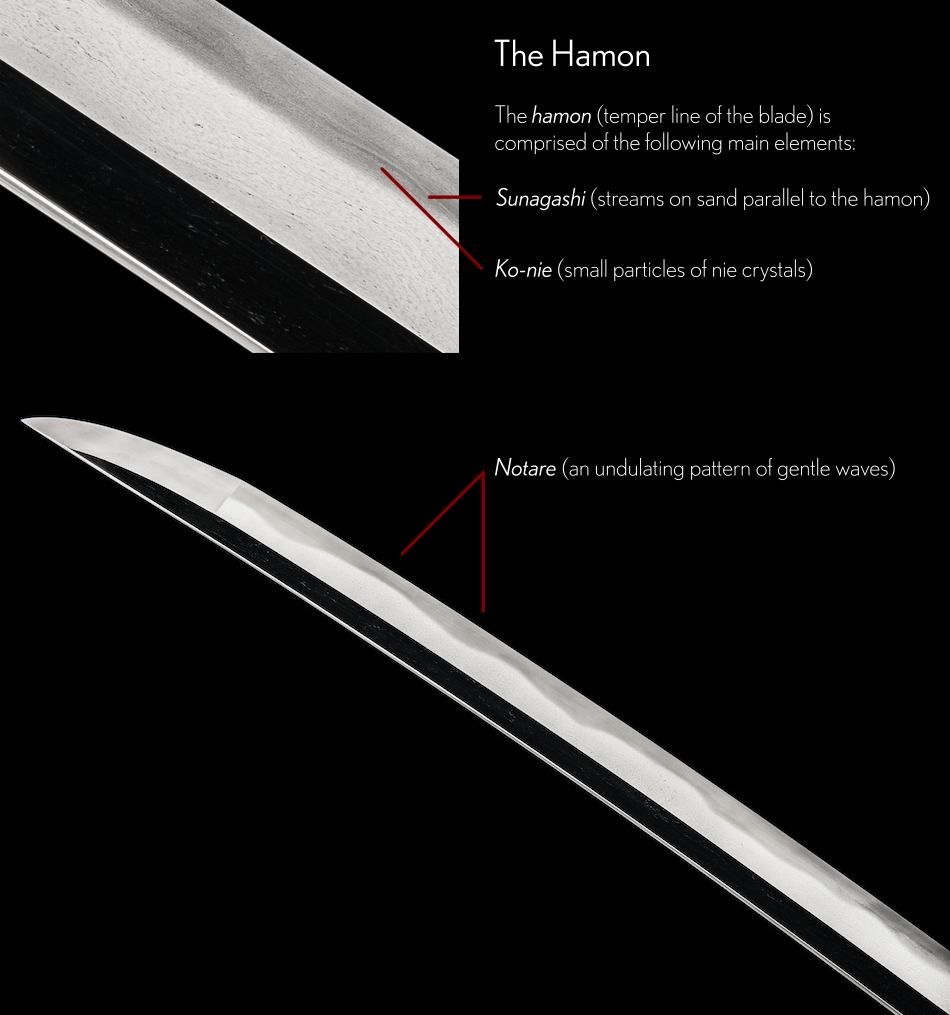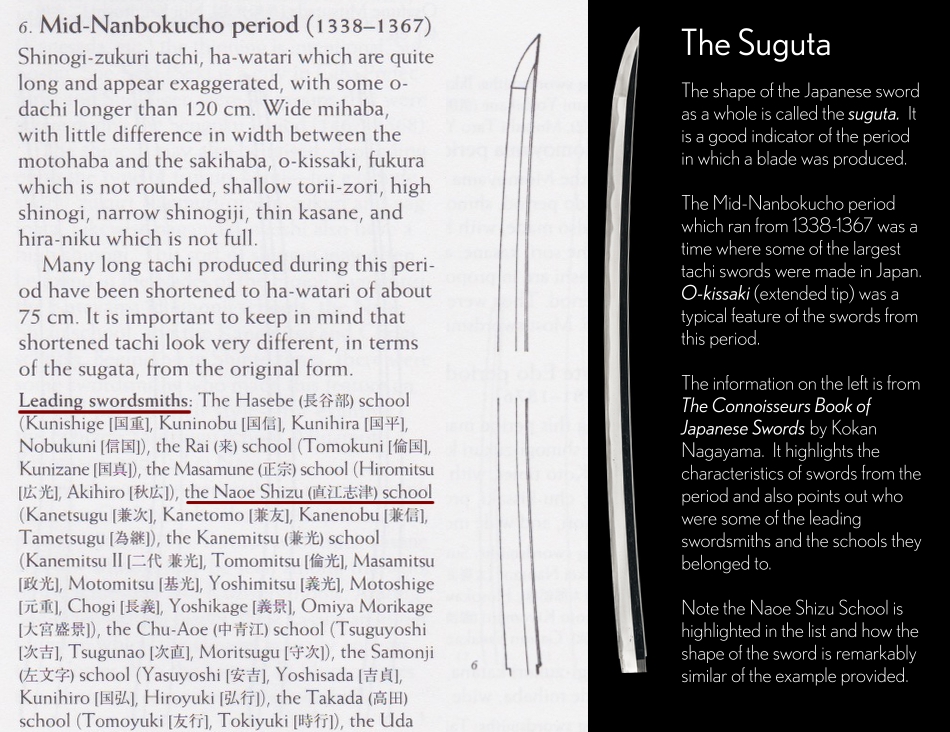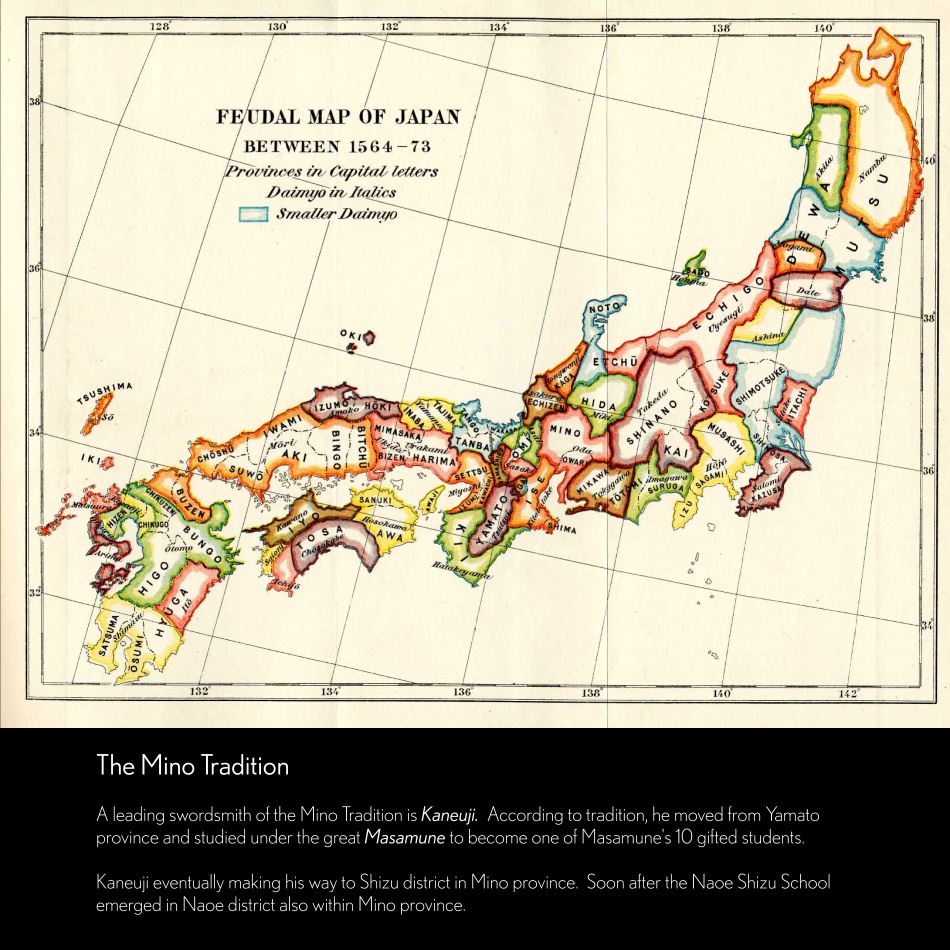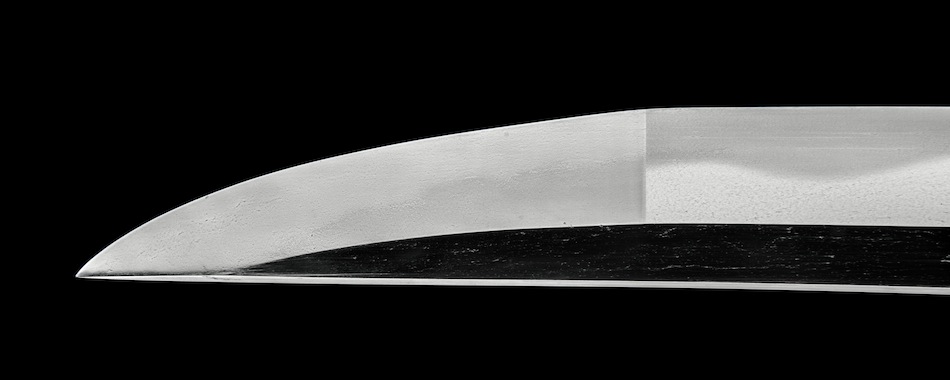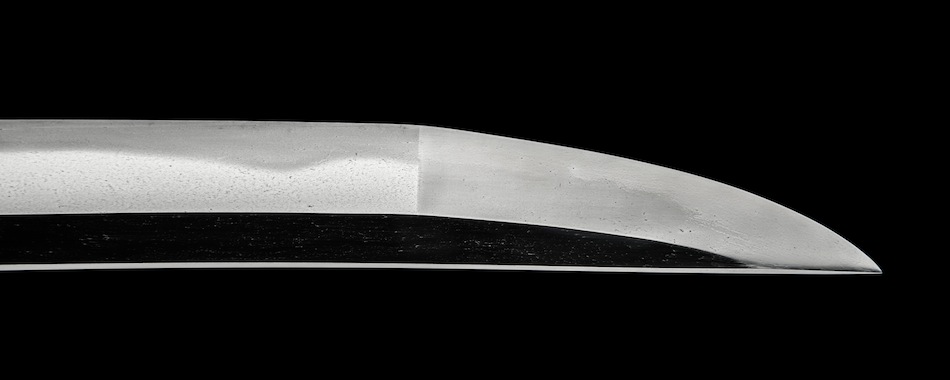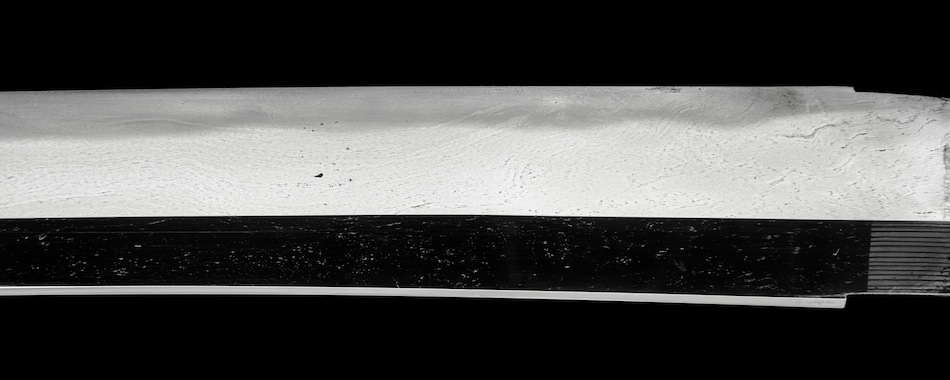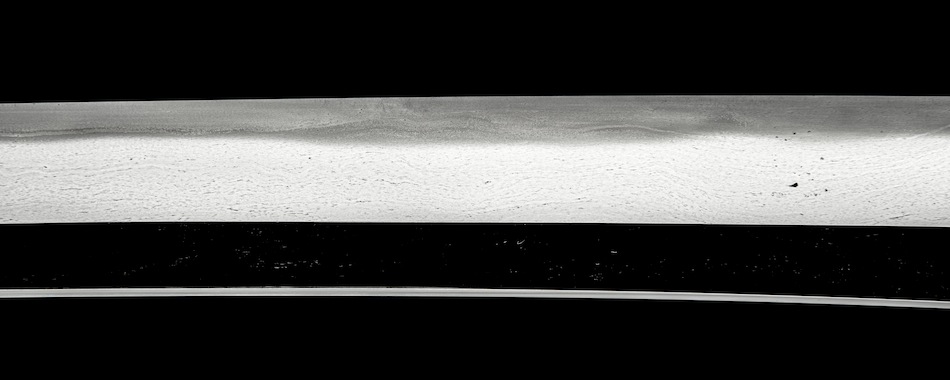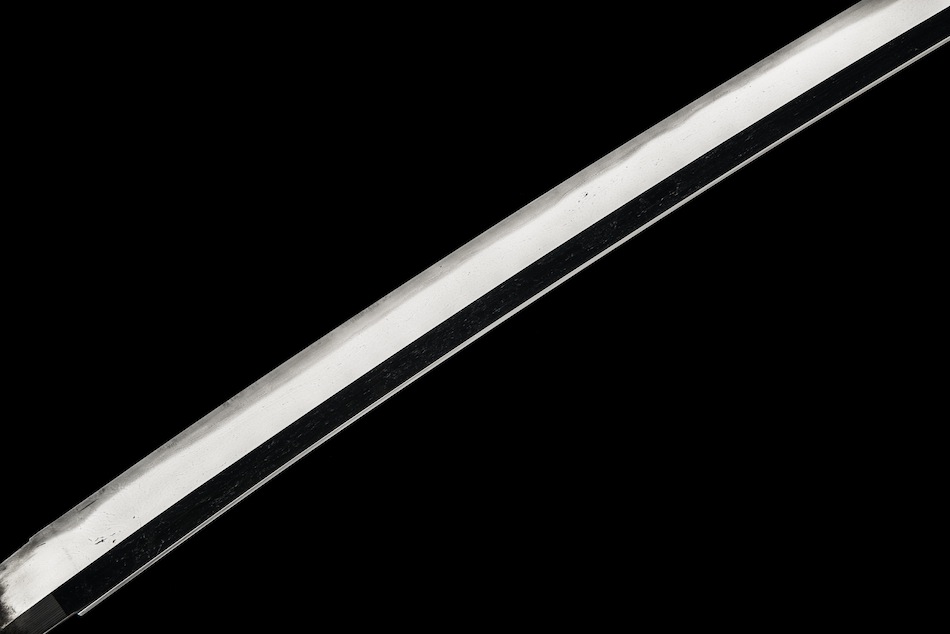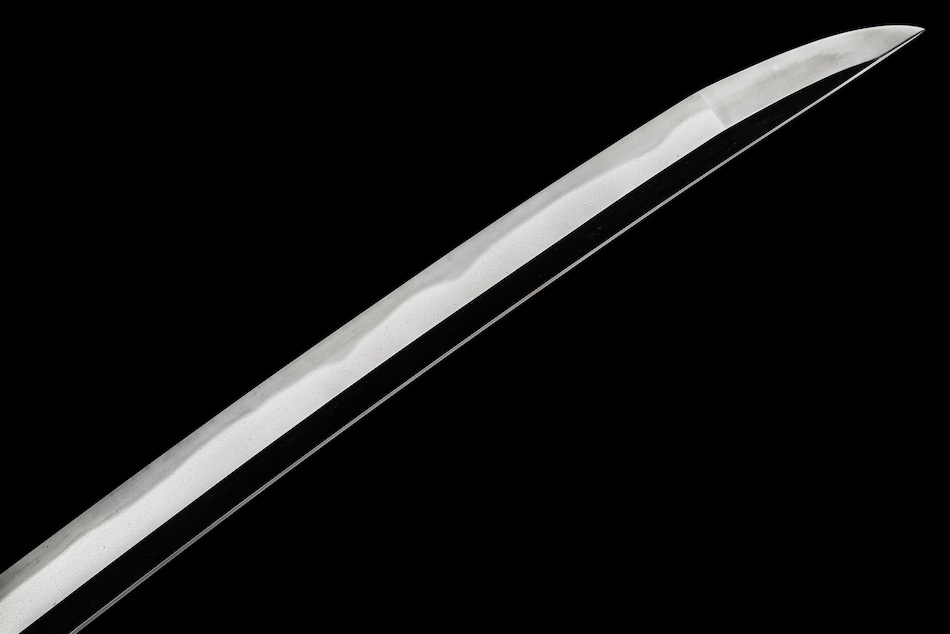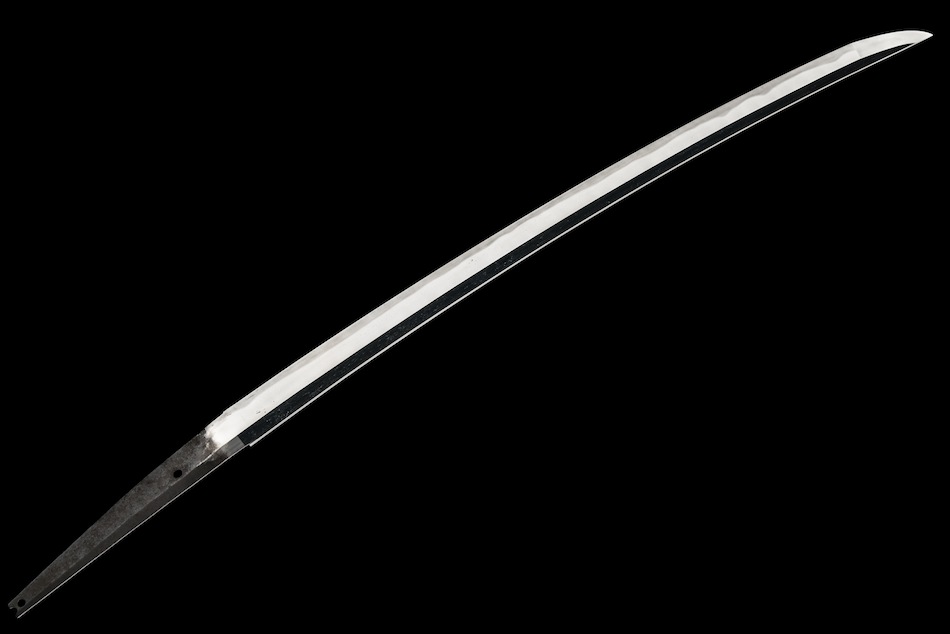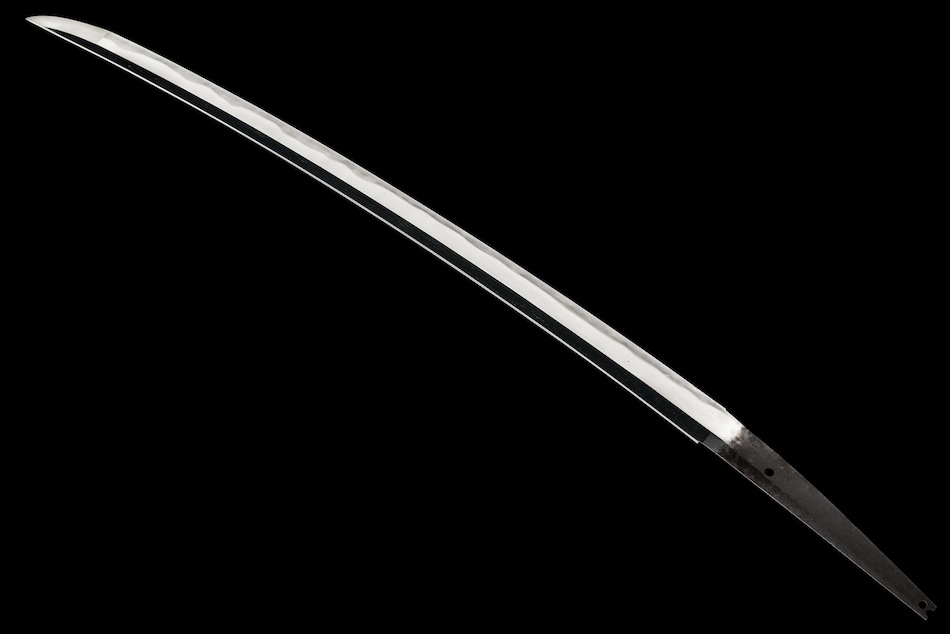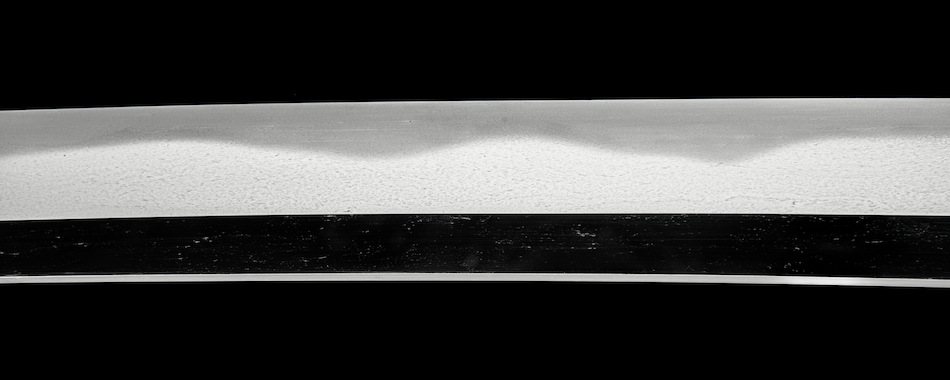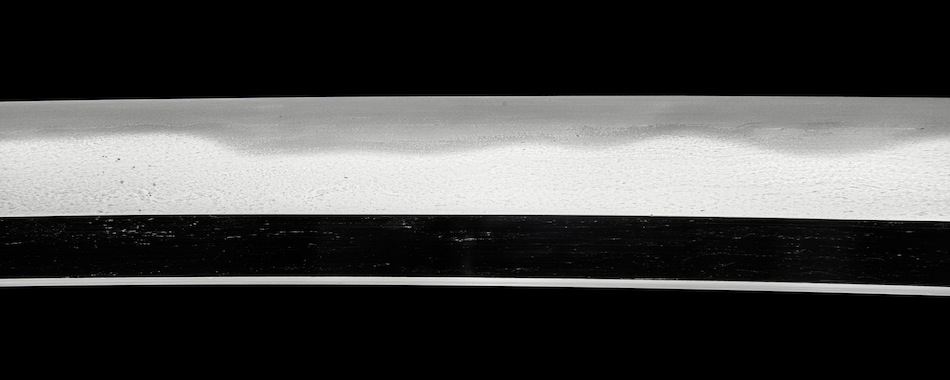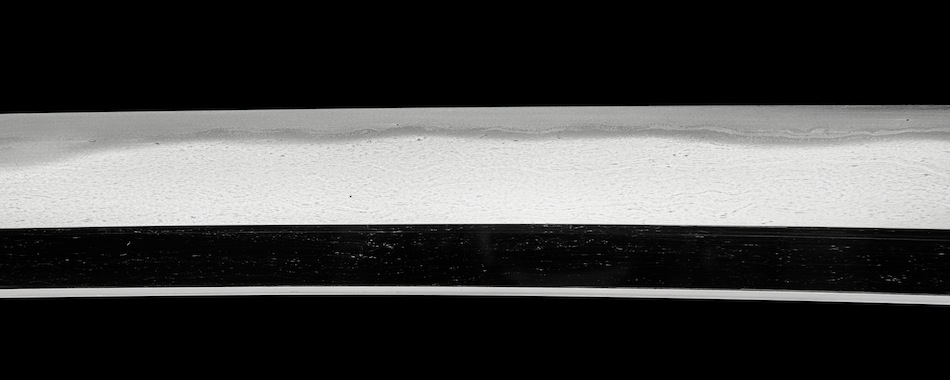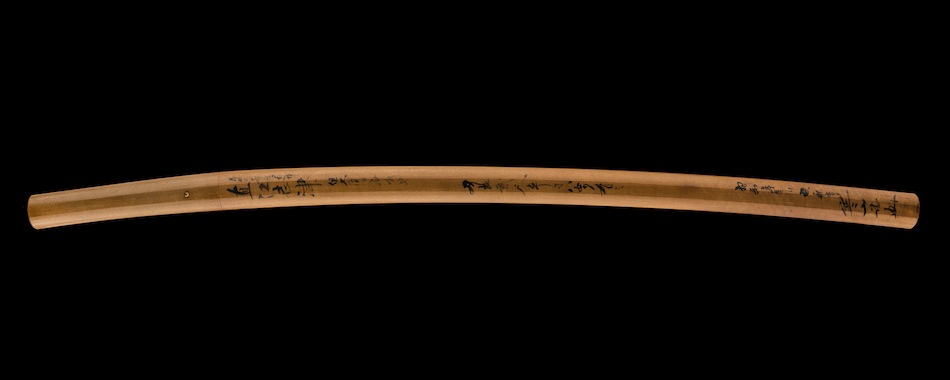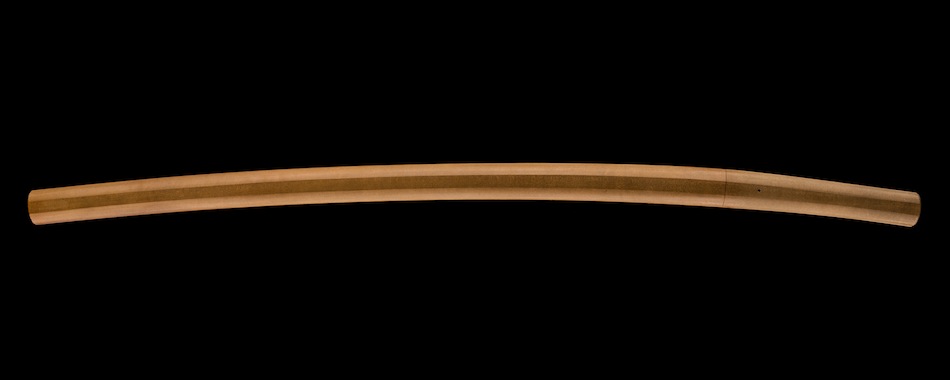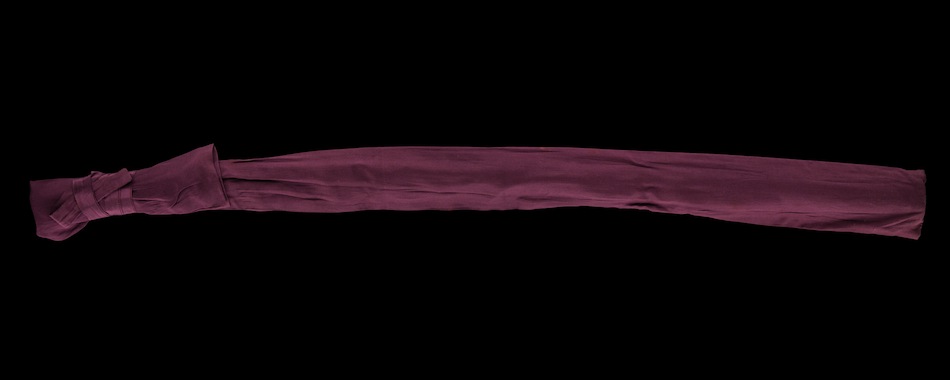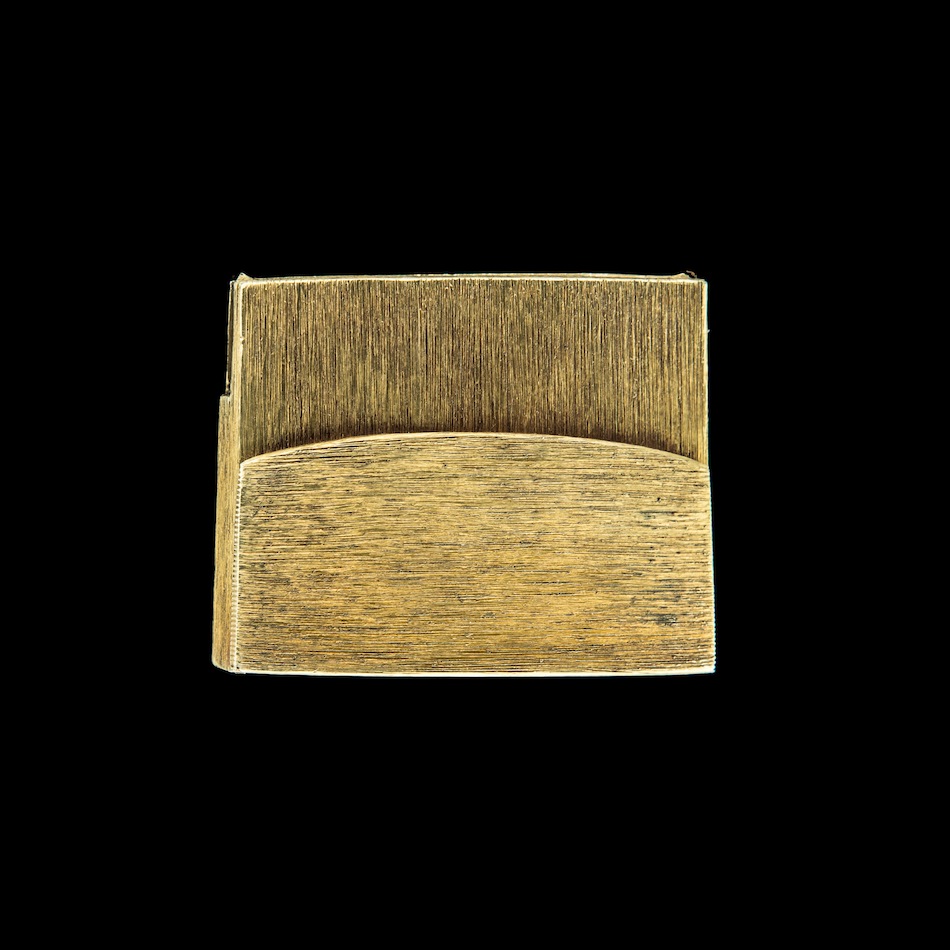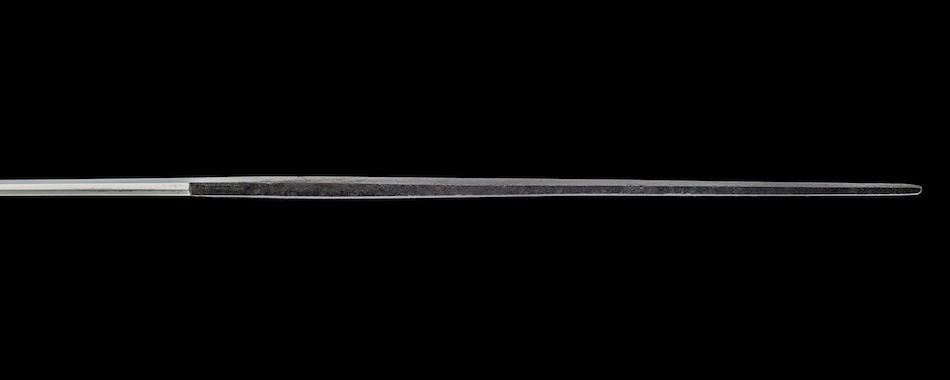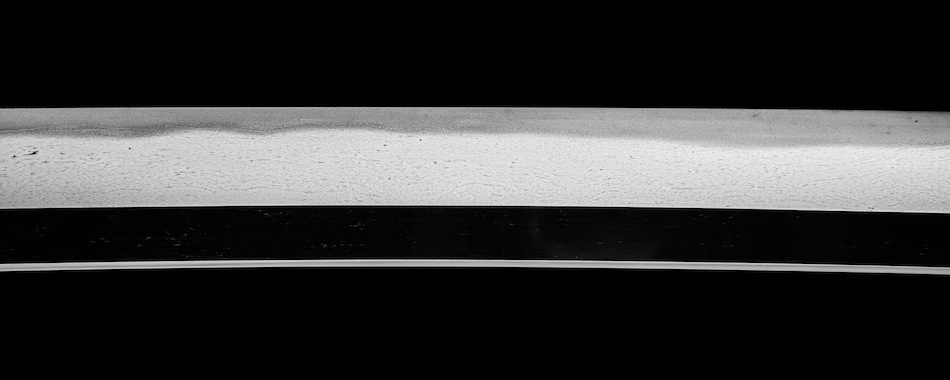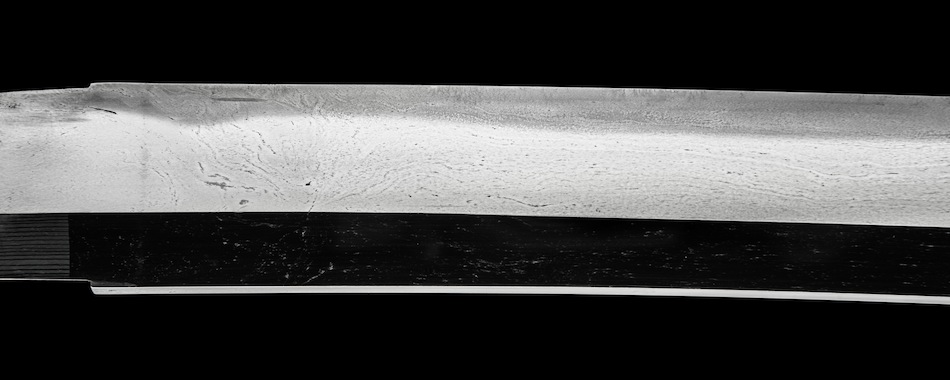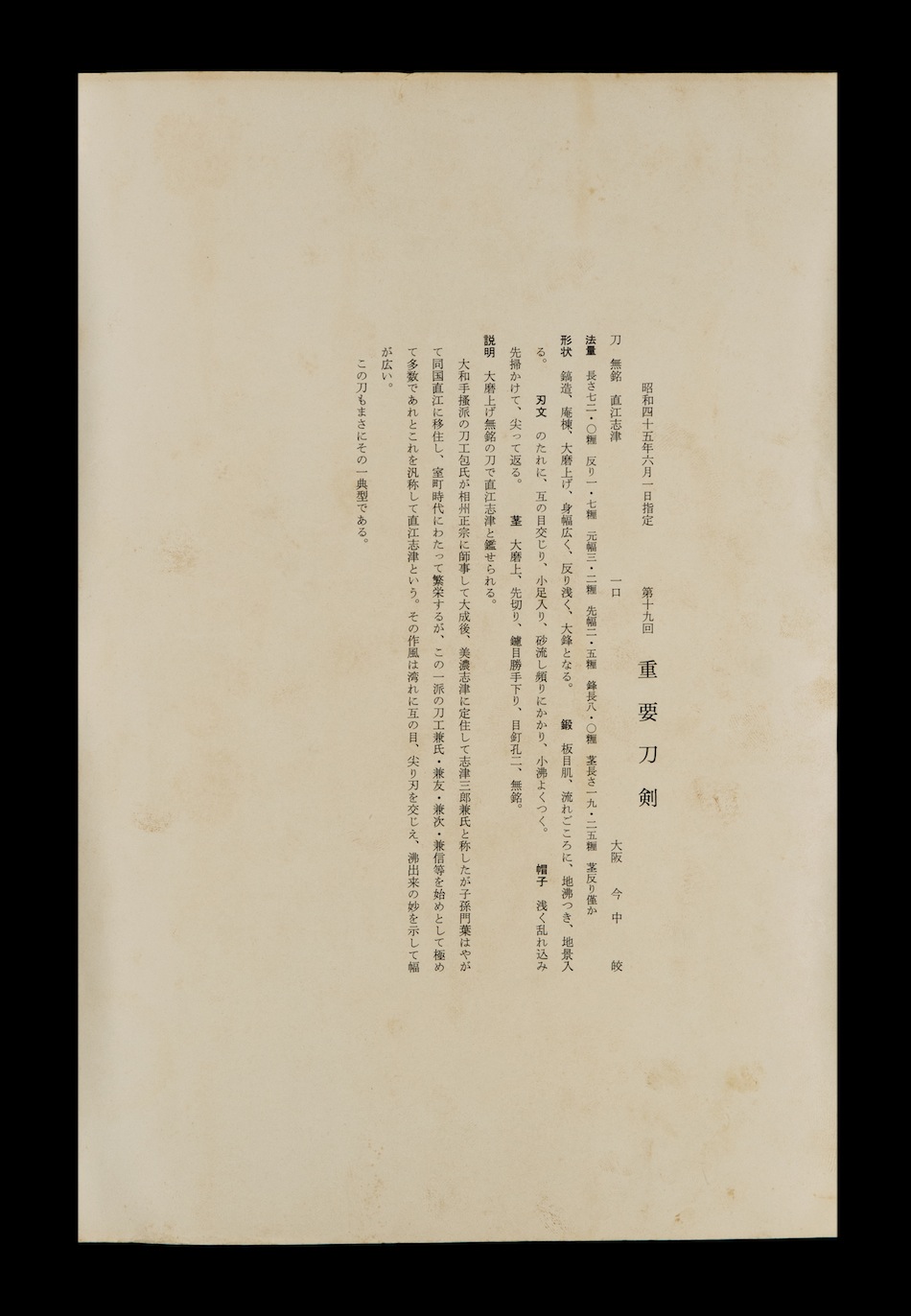A NAOE SHIZU SCHOOL JUYO KATANA
Overview
It gives us great pleasure to offer an NBTHK 19th Juyo Token katana (Important Sword) attributed to The Naoe Shizu School.
In a word, the sword is spectacular. Her remarkable o-kissaki (long extended tip) and majestic shape captures the imagination. This sword was once a tachi of course, a formidable sword surely carried during the warring mid-Nambokucho period (1338-1367).
According to historical records swordsmiths populated Mino province in the Hogen era (1156-1159) during the Heian period. However, it’s only once the very late Kamakura period (early 1300s) appeared that works by Shizu Saburo Kaneuji and Kinju have been confirmed.
To give a sense of context, Kaneuji is said to have moved from Yamato (Nara) to study under the great Masamune to become one of his ten finest pupils (Masamune Jutettsu).
Kaneuji eventually moved to Shizu district in Mino province and is largely considered the founder of the Mino tradition. Incidentally, Shizu means ‘still’ or ‘calm’ in Japanese.
As one would have expected, Kaneuji’s works carry a strong mixture of Yamato Tegai School qualities (a jihada of mokume hada with straight grain masame hada) and the Soshu tradition with a hamon displaying nie-deki (large, visible crystals) with plenty of hataraki such as sunagashi (streaks of sand), kinsuji (stripes of gold) and inazuma (crooked lightning bolts).
A noteworthy difference is that is that the hamon carries some togari (tapered peaks) in the hamon. As a basic rule, all Mino tradition swords have togari in the hamon.
Unsigned swords attributed to Kaneuji are known as Yamato Shizu (Shizu meaning ‘Kaneuji’).
The Naoe Shizu School
In the beginning, students of the O-Shizu School (founded by Kaneuji) and of the Naoe Shizu School moved to Naoe district also in Mino province to differentiate themselves.
In the beginning, students of the O-Shizu School (founded by Kaneuji) and of the Naoe Shizu School moved to Naoe district also in Mino province to differentiate themselves.
Notable students include Kaneyuki (son of Kaneshige), Tametsugu (a disciple of either Go Yoshiro or Norishige), Kanetoshi, Kanetsugu, Kanenobu and later generations of Kaneuji.
What makes the Naoe Shizu School different from that of O-Shizu is that the sugata (shape of the sword) is superior; key traits being that of a wide mihaba and o-kissaki. Both of which, according to Nagayama Kokan of the Connoisseurs Book of Japanese Swords, “lend to a grand appearance”.
Of equal importance to note is that the jihada has mokume-hada with generous amounts of flowing masame (straight grain). This is especially evident near the hamon or in the shinogi-ji.
The folding pattern in the steel has a direct influence on the hamon – displaying sunagashi (parallel streaks of sand) in a wavy notare hamon. All such qualities of the Naoe Shizu School can be seen and enjoyed in this magnificent katana.
To the collector, the fact that this katana was granted NBTHK Juyo certification in 1970 is highly significant. Juyo blades judged prior to 1971 are considered to be more prestigious because there was no higher ranking at the time (NBTHK Tokubetsu Juyo did not yet formally exist).
Swords awarded Juyo Token from this extremely selective period were of the absolute top rank and are thus highly coveted. In a nutshell, this katana was the Tokubetsu Juyo of its day.
Former co-chairman of the NBTHK, Dr. Sato Kanzan, has further signed the 72cm sword’s shirasaya (scabbard). This is a further level of respected authentication known as sayagaki.
All told, this is a katana of museum-grade importance. It is a remarkable piece of Japanese history that will give its new owner endless enjoyment and appreciation. Please inquire for further details.
SOLD
Information on acquiring a sword from Unique Japan:
5 Steps to Owning an Authentic Japanese Samurai Sword
5 Steps to Owning an Authentic Japanese Samurai Sword
*Photos by Eric Bossick for Unique Japan
Interested in Ownership of an Antique Japanese Sword?
If owning an authentic Japanese Samurai sword is of interest to you and your family, we would be honoured to serve you.
To visitors in Japan…
If you have the pleasure of living in Japan or visiting the country, we recommend that you come to one of our upcoming sword shows or schedule a private VIP meeting with us.
VIP meetings are normally held near JR Ebisu station in Tokyo at a hired gallery space. We can also arrange visits to a company office, hotel, near the airport or at a private residence.
To visitors around the world…
To those exploring our collection online, be sure to download our catalogue of available swords here.
We completely respect the fact it takes a HUGE leap of personal FAITH in us to commit to a particular sword given the reliance on photos and descriptions for such a highly valued item.
It is our PROMISE to address all your questions to the best of our ability. It’s important to us that you feel completely confident that the sword you choose (and that chooses you) is destined for you and your family.
You can also take reassurance that ALL swords from Unique Japan are GUARANTEED AUTHENTIC and come with a 3-DAY WORRY FREE inspection period upon arrival to your home.
Legal Exportation from Japan
Yes, it is completely legal to own a genuine antique Japanese sword (even those that are several hundreds of years old). Unique Japan specialises in all proper legal compliances so that swords can be exported from Japan.
All required paperwork is provided free of charge for clients.
All required paperwork is provided free of charge for clients.
Unique Japan has safely sent well over 300 swords FROM Japan to immensely proud owners in the United States, Canada, Europe and around the world.
We look forward to making your dream of owning an authentic Japanese sword a reality for you.
Popular Pages of Interest
→ 7 Points to Consider when Choosing your Japanese Sword
→ 5 Steps to Owning an Authentic Japanese Samurai Sword
→ Download catalogue of currently available Japanese swords
→ Building your own custom koshirae and daisho, recommended!
→ PARTS of a Japanese Sword and Mountings (High-quality images)
→ 7 reasons WHY I love Japanese swords
→ Resource Information on Japanese Swords
→ NBTHK Certification Paper Ranking for Japanese Swords
→ NTHK-NPO Certification Paper Ranking for Japanese Swords
→ 5 Steps to Owning an Authentic Japanese Samurai Sword
→ Download catalogue of currently available Japanese swords
→ Building your own custom koshirae and daisho, recommended!
→ PARTS of a Japanese Sword and Mountings (High-quality images)
→ 7 reasons WHY I love Japanese swords
→ Resource Information on Japanese Swords
→ NBTHK Certification Paper Ranking for Japanese Swords
→ NTHK-NPO Certification Paper Ranking for Japanese Swords




